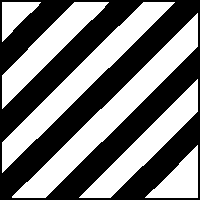
A signal post telephone. The phone calls direct to the signaller and is for use by drivers of trains held at a red signal in accordance with Module S4 of the Rule Book "Trains or shunting movements detained on running lines"(GERT8000-S4 Iss 5). However, in an emergency anyone can use such a telephone to call the signaller to report an incident requiring trains to be stopped. A later variation on this sign had a numeral in a circle showing the number of minutes a driver should wait before contacting the signal if this was different from the two minutes shown in the Rule Book.
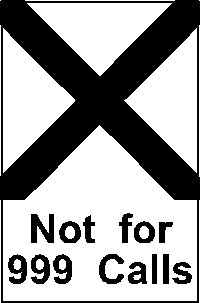
Any other lineside telephone which calls direct to the signaller. They may be found on the trackside for uses such as points testing or on platforms for station staff to contact the signaller concerning the dispatch of trains. The 'Not for 999 Calls' appendage was to discourage members of the public from attempting to make emergency calls. This arose following the Hidden Report into the crash at Clapham, but now appears to have fallen into disuse.
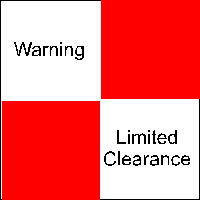
The Limited Clearance sign on a signal post telephone means that, because there is nowhere to stand clear of danger, it is not to be used by anyone other than a driver, except in an emergency and there is no alternative form of communication available. The reasoning behind this is that the driver of a train can be safe since he knows that the line is blocked because his train is standing on it. Anybody else would be in danger of being hit by a passing train. Eventually it could be replaced by the international standard danger symbol of an exclamation mark in a yellow triangle.
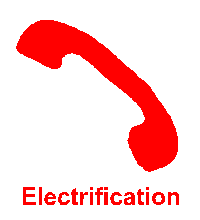
An electrification telephone calls direct to the Electrical Control Room. It can be used by maintenance staff for routine disconnections or in an emergency to request immediate shut-off of power. There are few of these about now as the policy is to use standard dial phones designated as Emergency Phones - see label below. You can see that the outline is of the BPO Handset No3. It's based on a design I made for a T-shirt to celebrate the telephone's centenary in 1977. The latest version of the standard has turned the handset the other way up. I really don't know why.
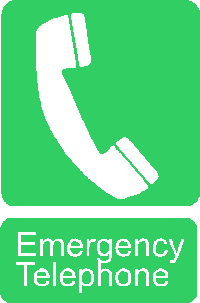
This is an internationally agreed standard sign for an Emergency Telephone, ISO 7001-008. Typically they would be found on platforms or other places accessible to the public. They can be used to call the emergency services by dialling 999 or 112, or to contact the Electrical Control Room to have the railway power switched off. Unfortunately someone in Rail Standards seems to have forgotten that there is an ISO symbol and have reverted in the Standard to the old Handset No 3 symbol as used above.
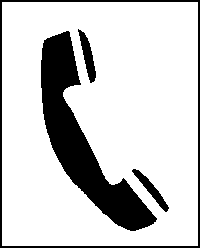
ISO Standard Telephone Label. Applied to any type of dial telephone capable of calling emergency services using 999 or 112. This sign is not limited to the railway and may also be found indicating pay telephones in public places. However I see from the current Standard that again the international symbol has been ignored and the old Handset No 3 is shown.
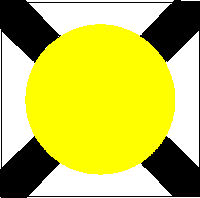
Very Limited Clearance Telephone. Signifies that it should only be used when there is an absolute posession in force (ie no trains running at all). We warned when this design was requested that the Dayglo spots would vary soon fade in daylight and, sure enough, they did. This sign is now superseded by a diamond sign with a cross placed on the signal post itself. These signs might have been found South of London where the tracks are very close together. Trains in this area are now all fitted with radio allowing the driver to call the signaller without getting out of the cab. I also spotted this sign on a platform telephone at Highley on the Severn Valley Railway. Plenty of clearance there!

Level Crossing Telephone. This sign is mandated by the Department of Transport for use on telephones at level crossings. It's designated as Sign 787 in the The Traffic Signs Regulations and General Directions 2002, SI 2002/3113, Schedule 3.
